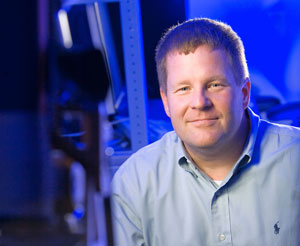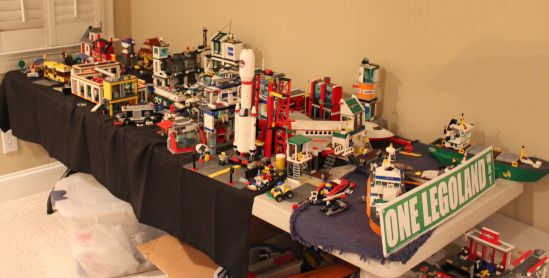By Tom Kurke, Geomagic COO and President
I just finished reading"Makers: The New Industrial Revolution" by Chris Anderson.
In"Makers" Anderson outlines the progression from the current digital economy to a transformed state that he sees on the horizon, the New Industrial Revolution. In this progression a society that, in the prior decade, focused on discovering new ways to collaborate, innovate and work together as part of dispersed teams will become one where those lessons will be applied to the real world.
He outlines that the Makers Movement, which lies at the heart of this progression, consists of three substantially transformative characteristics:
- They are people who use digital tools to create new designs for immediate prototype.
- They are in a cultural environment that fosters collaboration and sharing.
- They use common design standards, which allow for a digital prototype to be produced remotely (in quantity) or via desktop fabrication (e.g., 3D printing, mill, laser cutter, etc.).
 Anderson's book is a very good read if you are looking to learn more about the Maker culture and particularly if you share the belief, as I do (read my prior blogs - particularly the one challenging Gartner's"Hype Cycle" curve), that we are at the tipping point in the capture/modify/make ecosystem, which will unlock new creative cycles. He envisions a future where micro-manufacturers, leveraging the characteristics noted above, will fundamentally change the entire product development and manufacturing ecosystem. While additive-manufacturing technologies will play a role in a DIY manufacturing transformation, traditional manufacturing techniques, leveraged and utilized differently, will also help to force this change. According to Anderson, new product manufacturing is"no longer the domain of the few, but the opportunity of the many."
Anderson's book is a very good read if you are looking to learn more about the Maker culture and particularly if you share the belief, as I do (read my prior blogs - particularly the one challenging Gartner's"Hype Cycle" curve), that we are at the tipping point in the capture/modify/make ecosystem, which will unlock new creative cycles. He envisions a future where micro-manufacturers, leveraging the characteristics noted above, will fundamentally change the entire product development and manufacturing ecosystem. While additive-manufacturing technologies will play a role in a DIY manufacturing transformation, traditional manufacturing techniques, leveraged and utilized differently, will also help to force this change. According to Anderson, new product manufacturing is"no longer the domain of the few, but the opportunity of the many."
His historical background, providing the necessary context for where we are now (and where we are likely to go), is compelling. Highlighting Kickstarter as a transformative change engine (even though it's intended focus is creative projects, not necessarily physical goods), Anderson explains how Pebble, a Kickstarter project, beat Sony to the market with a cheaper, better smart watch. Pebble set a Kickstarter target of $100,000 but ultimately raised $3.34M. We have recently seen how this trend has continued as the FORM 1 team has raised nearly $3M as of this writing to create an"affordable, professional 3D printer." Their original goal was also $100,000. For an interesting perspective on how the FORM 1 Kickstarter project, and others, might be disruptive to the established players in 3D printing, see Al Dean's blog on the Develop3D site.
Beyond Kickstarter, Anderson highlights some very disruptive community-based, manufacturing-centric sites: Quirky and Etsy. If you haven't registered on these sites or ordered from them, you should. Quirky is such a fascinating concept: that anyone can be a designer. You submit an idea, people vote on it (up or out by the community), it's refined, and if enough people are interested in buying, it actually gets produced. It is a combination of crowdsourcing and market research all at the same time. Etsy goes a different direction, highlighting some of the most interesting, hand crafted, small volume products you will find anywhere.
What I found most interesting about the book, however, was how it caused me to reflect back on how I grew-up and how my friends and I tinkered with everything. As Anderson notes, "We are all Makers. We are born Makers (just watch a child's fascination with drawing, blocks, Lego or crafts), and many of us retain that love in our hobbies and passions."
I would take things apart just to see how they worked (and most times even successful at getting them back together without any leftover parts). Assembling circuit boards and kits from the local Radio Shack. Who can forget the feeling of actually hearing music on a radio that you actually built? Playing with a Timex-Sinclair Z80. Hacking my TRS-80 Color Computer by soldering two 8K RAM chips on top of each other get to the mythical 16K of RAM. You learn that soldering irons are hot. Razor blades are sharp too.
We all learned pretty quickly in the neighborhood that despite how it looked in our design drawings (of course drawn with pencil and lined paper), using garbage bags taped together was not an adequate parachute to stop a Frankengo-kart cobbled together from the front half of a grocery kart, a lawnmower engine mounted to a sprocket harvested from a 21-speed top-of-the-line Huffy Aerowind bike, and rear wheels harvested from a lawn tractor.
Fort building was a yearly summer exercise, with a goal of building something bigger, better and more dramatic each year. Underground fort from the kids in the next neighborhood? No problem, we'll build a tree fort spanning multiple trees. Wow, you've got flashlights glued to the wall for light? We've got several 12V car batteries wired together in series to power lights controlled by a wall switch and even a huge 5" B&W TV!
I grew up building model airplanes and boats and then gluing (or otherwise attaching) rocket engines to them. Sometimes we included firecrackers for kicks. It was part entertainment, part destruction, and part physics lesson. (Things go up and come down very fast, especially in the case of a model rocket when you intentionally glue the nose cone on so that it doesn't deploy a parachute.) Note to my childhood neighbor Tommy: It is most certainly a bad idea to pick up a model rocket engine, blow in it, and then say you can see a glowing ember. That is a sure-fire way to lose your eyebrows again!
In many ways, the scars on my arms, legs, head, etc., and those of the other kids I grew up with, are a road map to my many failed Maker attempts. I guess you could say that growing up I was 2/3 Maker and 1/3 Shiva the Destroyer, switching roles, often several times, during the same day. The cycle of construction/destruction, in hindsight, seems very innate. It was 100% fun. Anderson is right when he says,"We are born Makers."
My two sons are certainly growing up differently from how I grew up. The budding Maker in my older son had expressed itself in hours and days of"town building" with all sorts of miscellaneous construction bits acquired over the years. He used Legos, of course, but also wooden blocks, train sets, bathroom carpets (for the oceans), ever-expanding hobby and craft tables, etc. I was constantly amazed not only with the actual construction, but also with the shear creativity and well-thought story behind everything in his towns ("Well of course, Dad, you have to put the seaplane next to the shipping port, otherwise how would the cars get to the dealers?"). But after years of doing so - virtually overnight, it seemed - he abruptly stopped building.
Where did all this Maker creativity go? Was it a phase that he simply grew out of?

The Kurke boys' Lego Maker Town
Welcome to the Minecraft generation. I am fascinated with the way that my own children (admittedly a very small sample size) can easily switch and bridge the digital divide from the virtual to the real world. For those who have not experienced Minecraft, you could consider a Maker paradise in a virtual world, a virtual construction sandbox. (Click here for more information on Minecraft.) My kids play it on our Microsoft Xbox 360. When I first saw it, I thought that it had the absolute worst graphics ever and, of course, that is entirely missing the point. The object of the game (at least as far as my 9- and 11- year-old seem to care, and most of their friends) is to build the most outrageous and creative towns, buildings and things, all by leveraging the community and asking folks how they have done something before (e.g., shouldn't it be obvious that you can make a Nether Portal by creating a mold, then filling that mold with lava and flashing it with water to create the necessary Obsidian frame?). My boys spend hours of time in immersive creative play (interspersed with real world activities like school, homework, baseball, football, etc.) in a virtual world with their very real friends (who they have invited to their new"seed" world) creating virtual things. My younger son even asked if we could go to Minecon (an annual convention focusing on the Minecraft community) being held this year in Disney Paris.
As Anderson rightfully points out, however, we all"live mostly in the world of atoms, also known as the Real World of Places and Stuff."
I am not knocking Minecraft. In fact, if my kids are going to play video games, especially RPGs, this one is most certainly a darn good one. As for me however, I came away and re-committed to trying to work on some Maker projects with my kids in"Real World of Places and Stuff." Consider it Minecraft in the Kurke Backyard. Might start with building a tree fort. Or a go-kart. Will skip the model rocket with the glued-on nose cone.
At work I am going to try to find ways to expose more kids to the capture/modify/make ecosystem by trying to expand access to these tools among children. Like Anderson, I believe in a future where kids have access to reality capture (e.g., scanners); smart, intuitive design and fabrication tools; and a whole host of new DIY manufacturing technologies. These technologies most certainly include 3D printers, but also laser cutters and mills because no one tool or technique is perfect for everything. Anderson notes:
"Today, schoolchildren learn how to use PowerPoint and Excel as part of their computer class, and they still learn to draw and sculpt in art class. But think how much better it would be if they could choose a third option: design class. Imaging a course where kids would learn to use free 3-D CAD tools such as SketchUp or Autodesk 123D. Some would design buildings and fantastic structures, such as they sketch in their notebooks already. Others would create elaborate video game levels with landscapes and vehicles. And yet others would invent machines.
Even better, imagine if the design classroom had a few 3-D printers or a laser cutter. All those desktop design tools have a"Make" menu item. Kids could actually fabricate what they drawn onscreen. Just consider what it would mean to them to hold something they have dreamed up. This is how a generation of Makers will be created. This is how the next wave of manufacturing entrepreneurs will be born."
I couldn't agree more. Of course I would add scanners and 3D interaction devices as well (such as a 3D mouse and our own line of Sensable force feedback interaction devices).
I only hope my sons don't ask me to help them make a portal to The Nether!